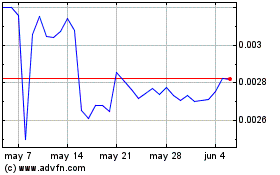Nokia Back into Relevance with the Blockchain
17 Mayo 2018 - 11:45AM
ADVFN Crypto NewsWire
Nokia Back into Relevance with the
Blockchain
Yesterday at Consensus, it was announced that a crypto business
called Streamr is getting together with Nokia and
a software company called OsiSoft to perfect a Blockchain network
for sharing data over the Internet of Things.
Through a brief look at Streamr’s website, it appears that at least
a basic version of the network is live. It currently includes roughly 27 small, but live
databases of data which have clickable images that lead you to a
prompt for paying for access via your node on the
network.
What this means is that once you sign up for the network, you can
purchase any of the posted data but each data group has a different
price, which is ostensibly chosen by what Streamr calls the data
“publisher.”
Once the publisher posts live access to a data set, it can be
purchased immediately. How is data purchased? Since it’s a
Blockchain network, this is, of course, not done with fiat. Streamr
has already launched its own ERC20 token called DATAcoin or DATA, which is currently
trading at about 12 cents a coin.
DATA is apparently used like stake on the network. Therefore, the
true incentive is, the more “DATA” that you own, the more data you
can buy. The price per set of data is based on how much time you
need to access it. For example, one set called “New York Population
Density,” is priced at 10 DATA per hour of access, while once
called “Real-time Forex and Cryptocurrency Quotes” is priced at 1
Data an hour of access.
Several sets, including “UK Power grid” and “Kraken cryptocurrency
market-data”, are even completely free. One key idea behind this
pricing is also to promote the use of the Internet of Things for
Business Intelligence. Since the marketplace reportedly launched
only yesterday, at Consensus, it remains to be seen how many data
sources will be available once it truly starts to
grow.
Even with this basic knowledge of the network’s operability in
mind, how do Nokia and OSIsoft fit into this picture? Based on the
facts that exist now, Nokia will be providing access to what are
called its “Kuha base stations,” which will allow certain Nokia
customers to choose to post their user data on Streamr and earn
crypto for doing so. The Kuha base stations are the hubs for
Nokia’s efforts to give cellular coverage to hard to reach areas.
It seems, in doing so, the Kuha tech creates local networks in the
vein of the Internet of Things to enable these connections.
Therefore, if these customers allow access to certain parts of
their user data, it will be updated live and continuously via
sensors on their mobile devices.
For Streamr, this is where Nokia’s true utility exists. In the case
of OSIsoft, the California firm will give Streamr access
to a pipeline of potential customers through its software, which
serves to track certain operational metrics for its enterprise
clients.
This means that Streamr plans for its B2C pipeline to run through
Nokia initially, while its B2B pipeline will run through OSIsoft.
In the future, Streamr wants to be the ideal data sharing economy,
which means that its goals reach much further than having only two
primary sources of users. As the network develops, it will also be
interesting to see how its security holds, especially given the
inherent risk in such ventures related to data leaks. Even with
this in mind, many would still argue that a Blockchain network is
safer than a centralized one.
BitShares (COIN:BTSUSD)
Gráfica de Acción Histórica
De Feb 2025 a Mar 2025

BitShares (COIN:BTSUSD)
Gráfica de Acción Histórica
De Mar 2024 a Mar 2025

Real-Time news about BitShares (Criptodivisas): 0 recent articles
Más de Bitshares Artículos de Noticias